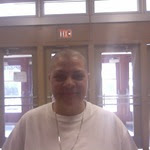Quality Education: Fostering Learning Opportunities
I used to blog for my old company, but they took the blog down. I am
not actually allowed to own the writings I put up on that blog, but as
I reference them on occasion in my writing I am putting those articles
up in my archives here for reference sake. I'll put the tag GS on those
articles noting that they were originally published on the http://schoolfinder.globalscholar.com/blog/
Quality
Education: Fostering Learning Opportunities
April
28, 2008 – 6:11 am by Brendan
Part three in the
Quality
Education
series.
Last week I talked
about how children and students learn best as independent learners.
This week we want to create opportunities to teach students to to be
independent learners.
The most common
piece of advice I get as a parent is “Starting with young children
let them help around the house.” I know my three year old loves to
help make coffee in the morning. This used to mean a ten minute
process, but now it is almost as fast as normal, with the added bonus
that he counts every morning.
As children get
older letting them take stuff apart is a great way for them to learn.
Try this instead of throwing away that broken VCR give it to your
child and let her try to fix it. I had a group do this during a
fourth grade simple machines unit and they loved every second of it.
When your child comes to you with a question, “I don’t know” is
a perfectly acceptable answer. Better yet is, “I’m not sure,
let’s go figure it out.” Now your child is learning how to do
things on her own, how to ask questions, and how to find answers.
With enough practice, and a whole truck full of patience, we will
here less of “I can’t do it,” and more of “I think it might
work if we do this.”
Learning
opportunities are everywhere when you start looking for them. Street
signs can be a reading exercise, map direction can be lessons in left
and right or North and South, and billboards can be lessons on
perceived values and real values. Obviously, lessons with younger
children are easier to find and think up. Mostly, this is because the
lessons for younger children tend to be more concrete, (What does
that sign say) and the answers are usually right or wrong.
Lessons for older
children can be found in everyday life, but as parents we may not
know the answer either. What if you see a house being built and you
ask your child how they know what angle to cut the roof joists? What
if your child wants to start his or her own blog? What are the
positives and negatives of Facebook? Why is Harvard
considered better than my local community college? Why did they put a
statue of that guy in the park?
Even as a Math
teacher and carpenter I couldn’t give a very good answer for the
first question, except that they have a book with the correct angle
depending on the slope of the roof. (Follow up questions could then
be: Why a certain slope? Would the area of the country make any
difference? How did they figure out the answers for the book? What is
slope?)
As our children grow
we find that the questions we need to ask become harder for us to
answer. This is a good thing for fostering learning. The trick to
making the most of learning opportunities is to not have the answers,
but still make children comfortable asking the questions. Then make
time to go looking for the answers. When our children and students
realize that we are still learning they don’t expect education to
stop at some magical moment in the future.
When you start
researching answers you can start teaching your children how to tell
the difference between fact and opinion (hint: most of my writing is
opinion) and good from bad. Everything from the choice or research
sites (libraries, experts, Internet, etc) you choose, to the depth
you want to go in the answer is a possible learning experience for
your child.
I think the most
important part of fostering independent learning is to model the
action you want. If we are willing to admit when we don’t know
something, but become excited about figuring out the answer then our
children will get excited also. As teachers we usually start teaching
a new skill or concept by modeling it in front of the class. Often
this will be followed up by allowing students to try the same skills
on their own. As the students get more proficient we start discussing
or writing about what we learned and work on formalizing the skill or
concept. As parents we can follow this same basic pattern in the real
world.
Next time how to
keep students excited about school.

Comments